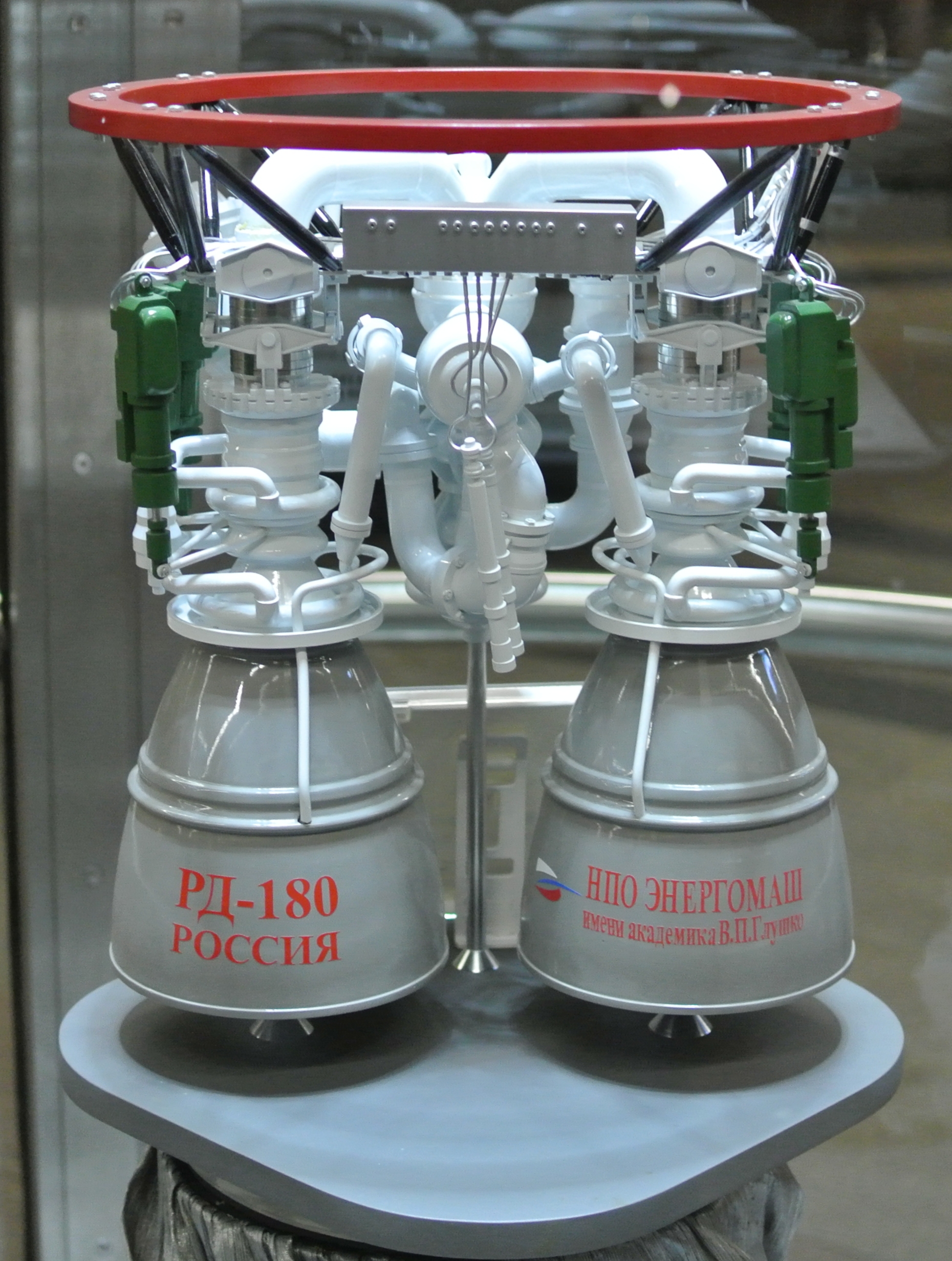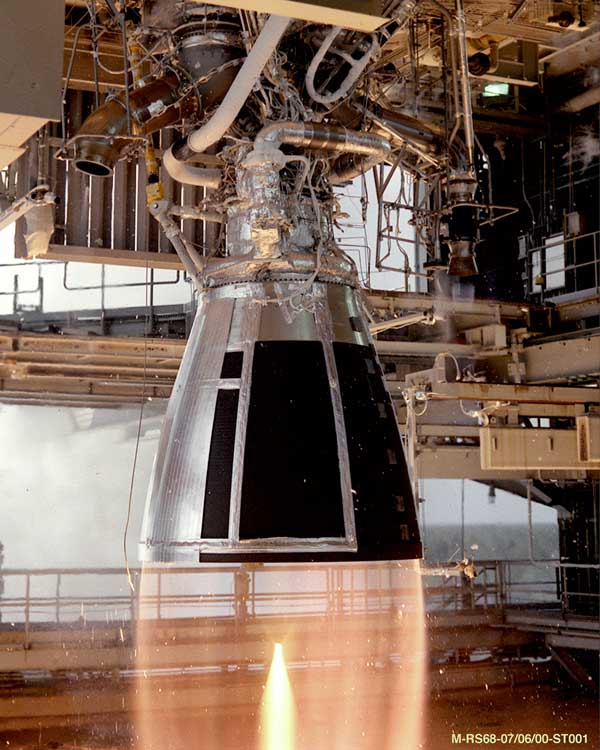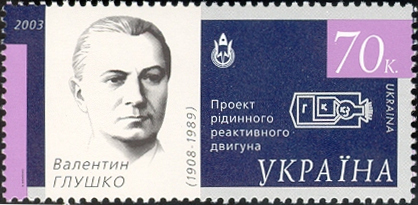|
Preburner
The staged combustion cycle (sometimes known as topping cycle, preburner cycle, or closed cycle) is a power cycle of a bipropellant rocket engine. In the staged combustion cycle, propellant flows through multiple combustion chambers, and is thus combusted in stages. The main advantage relative to other rocket engine power cycles is high fuel efficiency, measured through specific impulse, while its main disadvantage is engineering complexity. Typically, propellant flows through two kinds of combustion chambers; the first called preburner and the second called main combustion chamber. In the preburner, a small portion of propellant, usually fuel-rich, is partly combusted, and the increasing volume flow is used to drive the turbopumps that feed the engine with propellant. The gas is then injected into the main combustion chamber and combusted completely with the other propellant to produce thrust. Tradeoffs The main advantage is fuel efficiency due to all of the propellant flo ... [...More Info...] [...Related Items...] OR: [Wikipedia] [Google] [Baidu] |
Liquid-propellant Rocket
A liquid-propellant rocket or liquid rocket utilizes a rocket engine that uses liquid propellants. Liquids are desirable because they have a reasonably high density and high specific impulse (''I''sp). This allows the volume of the propellant tanks to be relatively low. It is also possible to use lightweight centrifugal turbopumps to pump the rocket propellant from the tanks into the combustion chamber, which means that the propellants can be kept under low pressure. This permits the use of low-mass propellant tanks that do not need to resist the high pressures needed to store significant amounts of gasses, resulting in a low mass ratio for the rocket. An inert gas stored in a tank at a high pressure is sometimes used instead of pumps in simpler small engines to force the propellants into the combustion chamber. These engines may have a higher mass ratio, but are usually more reliable, and are therefore used widely in satellites for orbit maintenance. Liquid rockets can be m ... [...More Info...] [...Related Items...] OR: [Wikipedia] [Google] [Baidu] |
RD-180
The RD-180 ( rus, РД-180, Ракетный Двигатель-180, Raketnyy Dvigatel-180) is a rocket engine designed and built in Russia. It features a dual combustion chamber, dual-nozzle design and is fueled by a RP-1/LOX mixture. The RD-180 is derived from the RD-170/RD-171 line of rocket engines, which were used in the Soviet Energia launch vehicle and are still in use in the Ukrainian Zenit launch vehicles. RD-180 engines are also used for the first stage of the American Atlas V launch vehicle, which is being phased out due to the national security implications of being reliant on foreign parts which became of concern after the Russian invasion of Crimea. , Russian supplies and maintenance have been discontinued as the result of trade sanctions caused by the 2022 Russian invasion of Ukraine. History The roots of the RD-180 rocket engine extend back into the Soviet Energia launch vehicle project. The RD-170, a four-chamber engine, was developed for use on the strap-o ... [...More Info...] [...Related Items...] OR: [Wikipedia] [Google] [Baidu] |
Gas-generator Cycle
The gas-generator cycle is a power cycle of a pumped liquid bipropellant rocket engine. Part of the unburned propellant is burned in a gas generator (or preburner) and the resulting hot gas is used to power the propellant pumps before being exhausted overboard, and lost. Because of this loss, this type of engine is termed open cycle. Usage Gas-generator combustion engines include the following: * Vulcain, HM7B *Merlin * RS-68 * RS-27A *J-2X * F-1 *RD-107 * CE-20 * Rocket launch systems that use gas-generator combustion engines: *Ariane 5 *Falcon 9, Falcon Heavy *Delta IV *Saturn V *Soyuz * Geosynchronous Satellite Launch Vehicle III *Long March 3B, Long March 2F * Rocket Lab Neutron *Miura 5 See also * Combustion tap-off cycle * Expander cycle * Pressure-fed engine * Rocket engine * Staged combustion cycle The staged combustion cycle (sometimes known as topping cycle, preburner cycle, or closed cycle) is a power cycle of a bipropellant rocket engine. In the staged c ... [...More Info...] [...Related Items...] OR: [Wikipedia] [Google] [Baidu] |
Rocket Engine
A rocket engine uses stored rocket propellants as the reaction mass for forming a high-speed propulsive Jet (fluid), jet of fluid, usually high-temperature gas. Rocket engines are reaction engines, producing thrust by ejecting mass rearward, in accordance with Newton's third law. Most rocket engines use the combustion of reactive chemicals to supply the necessary energy, but non-combusting forms such as cold gas thrusters and nuclear thermal rockets also exist. Vehicles propelled by rocket engines are commonly called rockets. Rocket vehicles carry their own oxidiser, unlike most combustion engines, so rocket engines can be used in a vacuum to propel spacecraft and ballistic missiles. Compared to other types of jet engine, rocket engines are the lightest and have the highest thrust, but are the least propellant-efficient (they have the lowest specific impulse). The ideal exhaust is hydrogen, the lightest of all elements, but chemical rockets produce a mix of heavier species, red ... [...More Info...] [...Related Items...] OR: [Wikipedia] [Google] [Baidu] |
Valentin Glushko
Valentin Petrovich Glushko (russian: Валенти́н Петро́вич Глушко́; uk, Валентин Петрович Глушко, Valentyn Petrovych Hlushko; born 2 September 1908 – 10 January 1989) was a Soviet engineer and the main designer of rocket engines in the Soviet space program during the heights of the Space Race between United States and the Soviet Union. Biography At the age of fourteen he became interested in aeronautics after reading novels by Jules Verne. He is known to have written a letter to Konstantin Tsiolkovsky in 1923. He studied at an Odessa trade school, where he learned to be a sheet metal worker. After graduation he apprenticed at a hydraulics fitting plant. He was first trained as a fitter, then moved to lathe operator. During his time in Odessa, Glushko performed experiments with explosives. These were recovered from unexploded artillery shells that had been left behind by the White Guards during their retreat. From 1924 to 1925 he wro ... [...More Info...] [...Related Items...] OR: [Wikipedia] [Google] [Baidu] |
Proton Rocket
Proton (Russian: Протон) (formal designation: UR-500) is an expendable launch system used for both commercial and Russian government space launches. The first Proton rocket was launched in 1965. Modern versions of the launch system are still in use as of 2022, making it one of the most successful heavy boosters in the history of spaceflight. The components of all Protons are manufactured at the Khrunichev State Research and Production Space Center factory in Moscow and Chemical Automatics Design Bureau in Voronezh, then transported to the Baikonur Cosmodrome, where they are assembled at Site 91 to form the launch vehicle. Following payload integration, the rocket is then brought to the launch pad horizontally by rail, and raised into vertical position for launch. As with many Soviet rockets, the names of recurring payloads became associated with the launch vehicle itself. The moniker "Proton" originates from a series of similarly named scientific satellites, which were amo ... [...More Info...] [...Related Items...] OR: [Wikipedia] [Google] [Baidu] |
N1 (rocket)
The N1/L3 (from , "Carrier Rocket"; Cyrillic: Н1) was a super heavy-lift launch vehicle intended to deliver payloads beyond low Earth orbit. The N1 was the Soviet counterpart to the US Saturn V and was intended to enable crewed travel to the Moon and beyond, with studies beginning as early as 1959. Its first stage, Block A, remains the most powerful rocket stage ever flown. However, all four first stages flown failed mid-flight because a lack of static test firings meant that plumbing issues and other adverse characteristics with the large cluster of thirty engines and its complex fuel and oxidizer feeder system were not revealed earlier in development. The N1-L3 version was designed to compete with the United States Apollo program to land a person on the Moon, using a similar lunar orbit rendezvous method. The basic N1 launch vehicle had three stages, which were to carry the L3 lunar payload into low Earth orbit with two cosmonauts. The L3 contained one stage for trans-lun ... [...More Info...] [...Related Items...] OR: [Wikipedia] [Google] [Baidu] |
Aerojet
Aerojet was an American rocket and missile propulsion manufacturer based primarily in Rancho Cordova, California, with divisions in Redmond, Washington, Orange and Gainesville in Virginia, and Camden, Arkansas. Aerojet was owned by GenCorp. In 2013, Aerojet was merged by GenCorp with the former Pratt & Whitney Rocketdyne to form Aerojet Rocketdyne. History Aerojet developed from a 1936 meeting hosted by Theodore von Kármán at his home. Joining von Kármán, who was at the time director of Guggenheim Aeronautical Laboratory at the California Institute of Technology, were a number of Caltech professors and students, including rocket scientist and astrophysicist Fritz Zwicky and explosives expert Jack Parsons, all of whom were interested in the topic of spaceflight. The group continued to occasionally meet, but its activities were limited to discussions rather than experimentation. Their first design was tested on August 16, 1941, consisting of a small cylindrical so ... [...More Info...] [...Related Items...] OR: [Wikipedia] [Google] [Baidu] |
Staged Combustion Rocket Cycle
''Staged'' is a British television comedy series, set during the COVID-19 pandemic in the United Kingdom and primarily filmed using video-conferencing technology. The first series premiered on 10 June 2020 on BBC One, and the second series premiered on 4 January 2021 on BBC One. A New Year Special was uploaded to the BritBox YouTube page on 31 December 2021. A third series premiered on 24 November 2022 on BritBox. Premise In the first series, Michael Sheen and David Tennant play fictionalised versions of themselves, trying to rehearse a performance of Luigi Pirandello's ''Six Characters in Search of an Author'' during lockdown via videoconference, while the underconfident director, Simon, struggles to keep control of the production. The second series follows the "real" Michael and David following the success of the first series of ''Staged''. Simon begins work on an American remake of the first series but Michael and David are not asked to reprise their roles. The third seri ... [...More Info...] [...Related Items...] OR: [Wikipedia] [Google] [Baidu] |
Lockheed Martin
The Lockheed Martin Corporation is an American aerospace, arms, defense, information security, and technology corporation with worldwide interests. It was formed by the merger of Lockheed Corporation with Martin Marietta in March 1995. It is headquartered in North Bethesda, Maryland, in the Washington, D.C. area. Lockheed Martin employs approximately 115,000 employees worldwide, including about 60,000 engineers and scientists as of January 2022. Lockheed Martin is one of the largest companies in the aerospace, military support, security, and technologies industry. It is the world's largest defense contractor by revenue for fiscal year 2014.POC Top 20 Defence Contractors of 2014 . Retrieved: July 2015 In 2013, 78% of Lockheed Martin's revenues came from military sales; [...More Info...] [...Related Items...] OR: [Wikipedia] [Google] [Baidu] |
RD-253
The RD-253 ( russian: italic=yes, Раке́тный дви́гатель 253 , ''Rocket Engine 253'') and its later variants, the RD-275 and RD-275M, are liquid-propellant rocket engines developed in the Soviet Union by Energomash. The engines are used on the first stage of the Proton launch vehicle and use an oxidizer-rich staged combustion cycle to power the turbopumps. The engine burns UDMH/ N2O4, which are highly toxic but hypergolic and storable at room temperature, simplifying the engine's design. History Development of the RD-253 started in 1961. Preliminary investigations and development of the engine as well as its further production was performed under the guidance of Valentin Glushko and finished in 1963. The RD-253 uses a staged combustion cycle for oxidizer-rich generator gas. It was used for the first time in July 1965 when six engines powered the first stage of the rocket. Development and production of RD-253 was a qualitative leap forward for rocketry of that ... [...More Info...] [...Related Items...] OR: [Wikipedia] [Google] [Baidu] |




